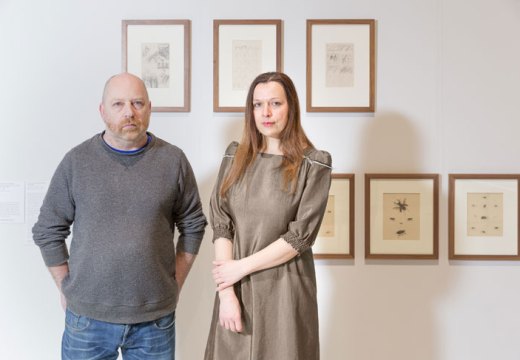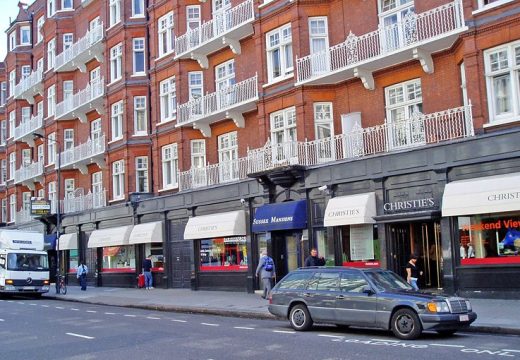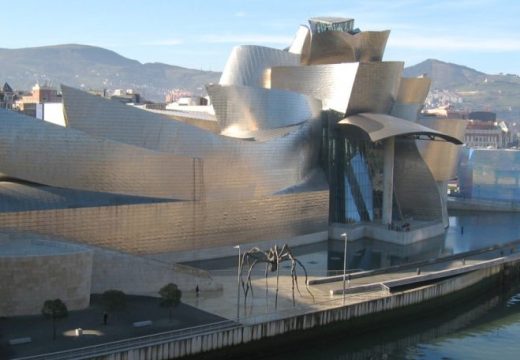On 1 February this year, eager crowds streamed through the doors of the National Museum of Bosnia-Herzegovina in Sarajevo – smartphone-wielding teens and school groups in the afternoon, adults in the evening. It was the museum’s 129th birthday and there were queues to see the museum’s most celebrated and precious exhibit, the 14th-century Sarajevo Haggadah. Many brought their children – or their children brought them. One father with his young son told me that, after a tiring day at work, he had secretly hoped his son might forget about visiting the museum, but here they were, making their way to the displays exploring Bosnia’s medieval past. Museum staff gave up counting after 5,000 visitors.
It has been nearly a year and a half since the museum, known locally as the Zemaljski Muzej, reopened. It had been closed for three years owing to the reluctance of Bosnia’s central state politicians to deal with the legal status of state-level cultural institutions that had existed in pre-war Republic of Bosnia-Herzegovina, and with their consequent lack of funding. More than 20 years after the end of the war, these questions are still unresolved.
Watching the enthusiastic crowds, one might be forgiven for thinking the museum’s troubles were over. But the forces that led to its closure have changed little in the intervening period. While it has become common to talk of the positive role of cultural heritage in bringing about post-conflict reconciliation, the case of the Zemaljski Muzej offers a bitter example of how contentious cultural heritage can be and of how the politics of cultural exclusivism persists, despite two decades of international efforts to reverse this trend.
The Zemaljski Muzej, which houses some of Bosnia-Herzegovina’s greatest cultural treasures, with collections of international importance, has survived two world wars and the 1992–96 Siege of Sarajevo. The Bosnian War was a conflict in which the aggressive pursuit of mono-ethnicity targeted not only the cultural heritage of unwanted groups during vicious campaigns of ethnic cleansing, but also those institutions which symbolised a common Bosnian identity and cultural patrimony, evidence of a long history of diversity and coexistence. The Zemaljski Muzej was among these institutions.
Founded in 1888 by Bosnia-Herzegovina’s Austro-Hungarian administration, the Zemaljski Muzej grew into an interdisciplinary research and educational centre that played a major role in the development of Austria-Hungary’s new colony. After the Second World War it thrived and evolved in socialist federal Yugoslavia to become Bosnia-Herzegovina’s national museum and its foremost research and collecting institution.
After the outbreak of the Bosnian War, the museum, set on the boulevard that notoriously came to be called Sniper Alley, found itself on the frontline and the focus of constant shelling and sniping. Throughout the Siege of Sarajevo, the Zemaljski Muzej’s dedicated (and multi-ethnic) staff came to the museum every day, determined to preserve its collections as best they could in deteriorating conditions. When I first visited the museum in March 1995, snow was falling through a hole in the shell-ravaged dome of the entrance hall and I accompanied the keeper of natural sciences, Svjetoslav Obratil, on his morning round to collect the snipers’ bullets from Bosnian Serb lines that had pierced exhibition rooms the night before.
By the end of the war, the museum’s staff was half of what it had been at the start, its elegant, turn-of-the-century neoclassical buildings were badly damaged and leaking, and its collections were at risk. Against the odds, the museum continued to function. Although its buildings were restored with outside aid and links with international experts were revived, there was no clear answer to the most significant challenge ahead: how would it survive the power-sharing arrangements between Bosnia-Herzegovina’s three ‘constituent peoples’ – Serbs, Croats, and Bosniaks (Muslims) – which came with the Dayton Peace Agreement in December 1995?
The Dayton Agreement divided the country into two entities: Bosnian Serb-dominated Republika Srpska and the Federation of Bosnia-Herzegovina (subdivided into 10 Muslim- or Croat-majority cantons). Most powers, including responsibility for culture, were devolved to the entities at the expense of the central state. In the world of Republika Srpska’s officialdom, still led by hardline nationalist politicians, anything that strengthened Bosnia-Herzegovina at state level – particularly culturally – was detrimental to the interests of Bosnian Serbs. Republika Srpska is currently the fiefdom of Milorad Dodik and his SNSD party. Once held as a moderate by Western powers, Dodik has revealed himself a nationalist whose secessionist rhetoric is regarded as the principal threat to Bosnia-Herzegovina’s stability.
There was a lack of clarity in the Dayton Agreement on many issues that arose in the new post-war state. One thing was clear, however – there was to be no state-level Ministry of Culture. Where interaction in cultural activities was unavoidable in the international arena, the Ministry of Civil Affairs had responsibility. But, depending from which ‘national’ group and political party the minister came, post holders had the ability to undermine support for state-level cultural institutions that represented Bosnia-Herzegovina as a whole.
Among the ethno-national political elites who now held power, only the Bosniaks maintained the idea of a unified state and a common identity for Bosnia-Herzegovina. Though under the terms of Dayton, Sarajevo was the declared capital of Bosnia-Herzegovina, for nationalist ideologues the city was merely the capital for Bosnia’s Muslims, as Banja Luka was for Serbs, and Mostar for Croats. Funding for Sarajevo-based institutions was the responsibility of Sarajevo Canton with no relevance for the citizens of Republika Srpska or Croat-dominated cantons – despite the presence of thousands of returnees of different ethnicities to the homes from which they had been ethnically cleansed.
From 2007 until 2015 Sredoje Nović, a Bosnian Serb and a close political ally of Milorad Dodik, held the post of Minister of Civil Affairs. The Sarajevo-based state-level institutions that spoke of a shared Bosnian cultural heritage were anathema to him. In 2010 a representative of Nović stated that there were no state institutions of culture in Bosnia-Herzegovina, that culture was in the control of the entities, and that the Ministry of Civil Affairs was not in charge of financing cultural institutions.
Along with six other state-level cultural institutions, the Zemaljski Muzej fell into a budgetary gap that ethno-nationalist politicians eagerly exploited. Among them were the National Art Gallery, the Historical Museum, and the National and University Library – that same National Library whose destruction in August 1992 by incendiary shells from Bosnian Serb artillery had aroused worldwide condemnation and led to a long-running UNESCO-led fundraising campaign. Now the ideology that had underpinned the destruction of cultural heritage during the war continued, through political manoeuvring, into the peace.
On 4 October 2012, the Zemaljski Muzej’s status and funding was still not settled and its staff had not been paid in more than a year. The museum’s then director, Adnan Busuladžić, announced that the museum would close to the public until its situation was resolved. Photographs of the planks nailed across the museum’s entrance went round the world.
For almost three years the museum’s management and staff were subjected to public accusations – broadcast widely in the media – of mismanagement, incompetence, negligence, and worse, from politicians and well-known cultural figures. There were legal challenges and formal prosecutorial investigations. As the accusations continued, negative perceptions of the museum grew – surely the museum must be ‘guilty’ of something? Yet far from abandoning their responsibilities, hidden from the public gaze, staff continued to go to the museum, working a rota of shifts at the museum day and night to guard and care for the collections.
While a number of campaigns highlighted the plight and importance of the museum, it was the Bosnian cultural NGO Akcija’s Ja sam Muzej (I am the Museum) campaign that captured the imagination of the public, transforming perceptions of the museum. Inspired by the dedication of the museum workers carrying out their rota of unpaid guard duties, the most successful part of the campaign was perhaps its ‘Shift at the Museum’, in which prominent public figures, along with international diplomats and ordinary citizens of Sarajevo, worked a shift at the museum and made it accessible to the public.
Yet though Ja sam Muzej was hugely effective in renewing public interest in the importance of the museum, it was the appearance in early 2015 of new actors on the scene with political clout, which ultimately brought about its reopening. Most prominent were the incoming US Ambassador Maureen Cormack and Adil Osmanović, the new Minister of Civil Affairs, appointed by the recently-elected Bosniak-led government. A solution to the problems of Bosnia-Herzegovina’s national museum began to look more hopeful.
Osmanović swiftly insisted on the importance of the Zemaljski Muzej to all Bosnia-Herzegovina and announced plans for a concrete proposal to resolve the problems of the seven state-level institutions. These culminated at a well-orchestrated event on 15 September 2015, where in the presence of a host of dignitaries, including Prime Minister Denis Zvizdić and Ambassador Cormack, the Zemaljski Muzej officially reopened to crowds of enthusiastic balloon-waving schoolchildren. Ambassador Cormack announced a large grant of US $625,000 from the US Ambassadors’ Fund for Cultural Preservation for preventive conservation of the Zemaljski Muzej’s collections. Earlier the same day, a memorandum of understanding had been signed in parliament ensuring financial support for the seven state-level cultural institutions until 2018. The support, however, came solely from Bosniak majority cantons and municipalities in the Federation – not from Croat-majority cantons, and certainly not from Republika Srpska.
It did not take long for politicians from Republika Srpska, led by Osmanović’s own deputy, Đorđe Miličević, to attack both the memorandum of understanding and the appointment of temporary management boards for the seven cultural institutions, which they denounced as illegal. Complaints from Republika Srpska’s entity cultural institutions followed. The director of the entity’s ‘National’ Museum in Banja Luka expressed outrage at Osmanović’s ‘favouritism’, granting millions to ‘Sarajevo’ cultural institutions, while those in Republika Srpska received crumbs. She omitted to mention that, unlike the Zemaljski Muzej, entity cultural institutions receive their entire operating budget from the entity authorities – anything that comes from the central state budget is extra.
Osmanović continues to defend the seven institutions as indisputable legal state-level institutions from the former Republic of Bosnia-Herzegovina that preserve the cultural heritage of all the peoples of Bosnia-Herzegovina. He reminds his opponents that the constitution, in theory, incurs an obligation to maintain the state-level institutions that had operated up until the signing of the Dayton Agreement.
Under its acting director, Mirsad Sijarić, a conservation centre has opened at the museum and financial support from the French Embassy to enable the Sarajevo Haggadah to be on permanent display has been announced. In April 2016 the Zemaljski Muzej and Akcija jointly won a prestigious European Union Prize for Cultural Heritage/Europa Nostra Award for, Sijarić told me, doing the very work for which the politicians and the media had condemned them. The museum’s legal status and the source of its operating funding remain uncertain.
Helen Walasek is the author of Bosnia and the Destruction of Cultural Heritage (Routledge). She was deputy director of Bosnia-Herzegovina Heritage Rescue (BHHR) for which she worked from 1994–98.
From the April 2017 issue of Apollo. Preview and subscribe here.
Unlimited access from just $16 every 3 months
Subscribe to get unlimited and exclusive access to the top art stories, interviews and exhibition reviews.















![Masterpiece [Re]discovery 2022. Photo: Ben Fisher Photography, courtesy of Masterpiece London](http://www.apollo-magazine.com/wp-content/uploads/2022/07/MPL2022_4263.jpg)
Has the Fitzwilliam lost the hang of things?